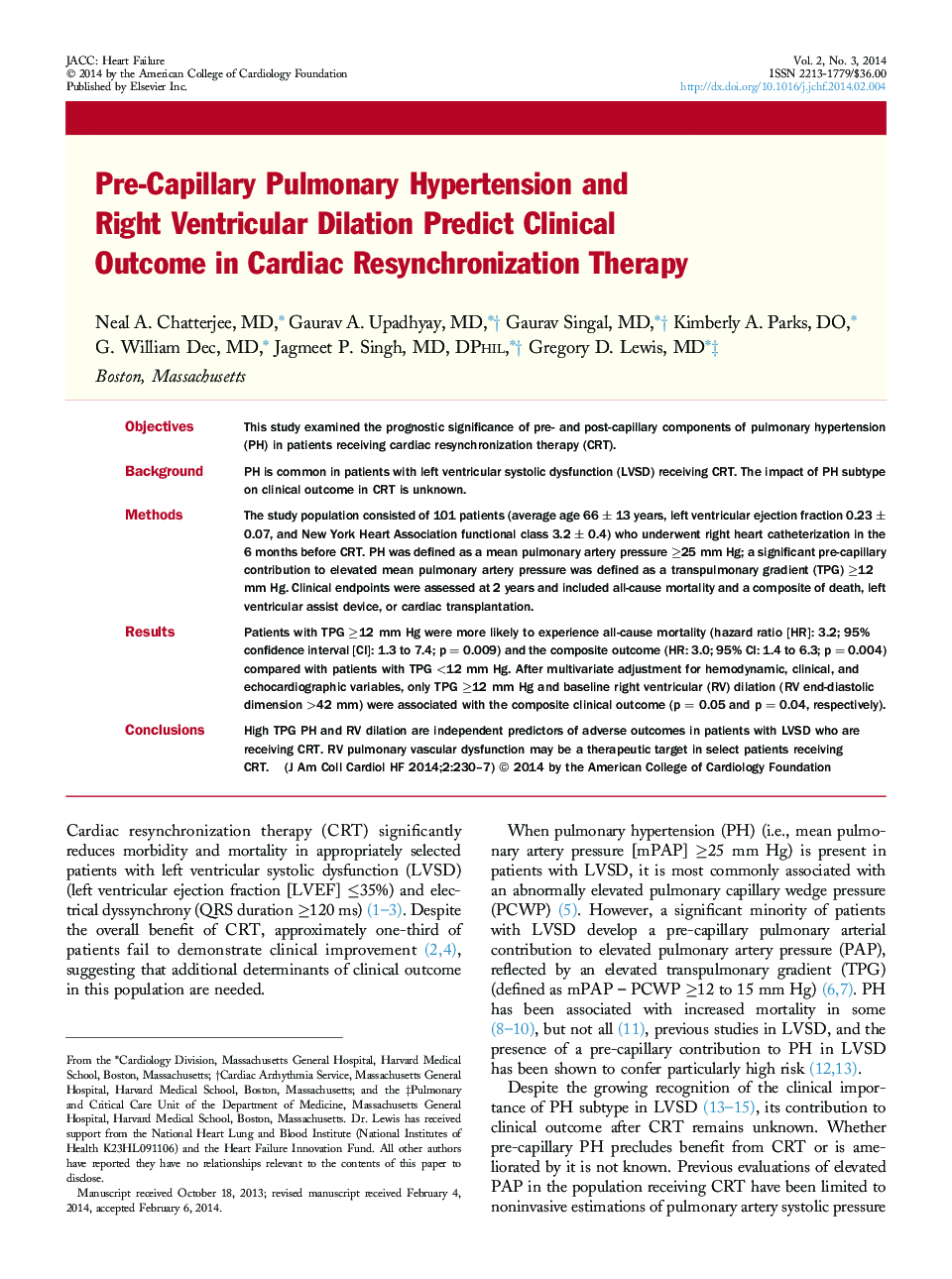| Article ID | Journal | Published Year | Pages | File Type |
|---|---|---|---|---|
| 2942502 | JACC: Heart Failure | 2014 | 8 Pages |
ObjectivesThis study examined the prognostic significance of pre- and post-capillary components of pulmonary hypertension (PH) in patients receiving cardiac resynchronization therapy (CRT).BackgroundPH is common in patients with left ventricular systolic dysfunction (LVSD) receiving CRT. The impact of PH subtype on clinical outcome in CRT is unknown.MethodsThe study population consisted of 101 patients (average age 66 ± 13 years, left ventricular ejection fraction 0.23 ± 0.07, and New York Heart Association functional class 3.2 ± 0.4) who underwent right heart catheterization in the 6 months before CRT. PH was defined as a mean pulmonary artery pressure ≥25 mm Hg; a significant pre-capillary contribution to elevated mean pulmonary artery pressure was defined as a transpulmonary gradient (TPG) ≥12 mm Hg. Clinical endpoints were assessed at 2 years and included all-cause mortality and a composite of death, left ventricular assist device, or cardiac transplantation.ResultsPatients with TPG ≥12 mm Hg were more likely to experience all-cause mortality (hazard ratio [HR]: 3.2; 95% confidence interval [CI]: 1.3 to 7.4; p = 0.009) and the composite outcome (HR: 3.0; 95% CI: 1.4 to 6.3; p = 0.004) compared with patients with TPG <12 mm Hg. After multivariate adjustment for hemodynamic, clinical, and echocardiographic variables, only TPG ≥12 mm Hg and baseline right ventricular (RV) dilation (RV end-diastolic dimension >42 mm) were associated with the composite clinical outcome (p = 0.05 and p = 0.04, respectively).ConclusionsHigh TPG PH and RV dilation are independent predictors of adverse outcomes in patients with LVSD who are receiving CRT. RV pulmonary vascular dysfunction may be a therapeutic target in select patients receiving CRT.
